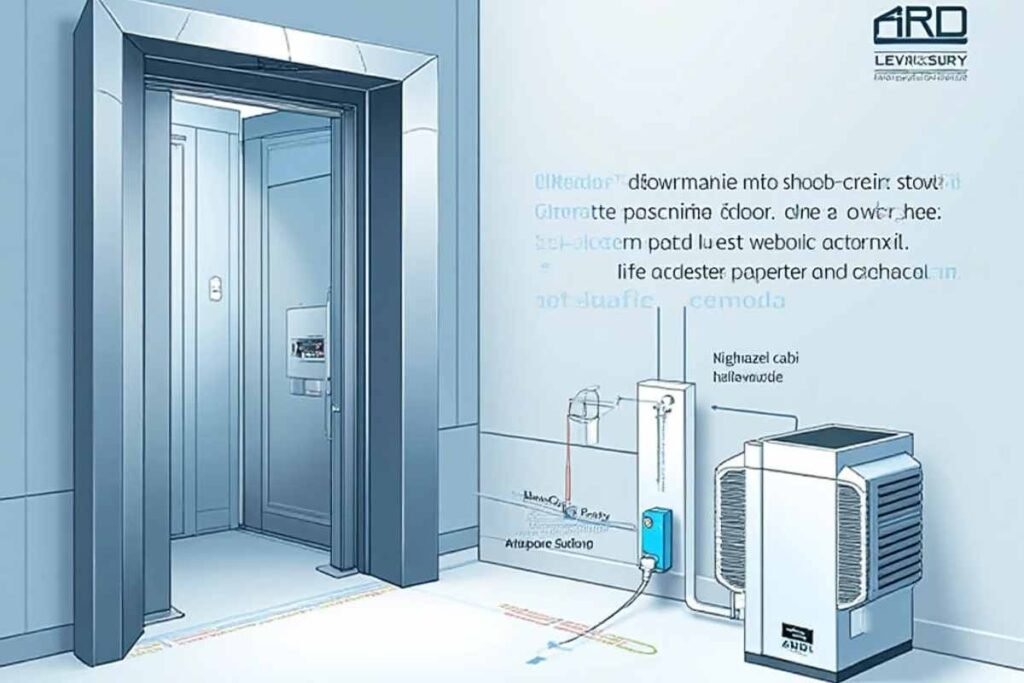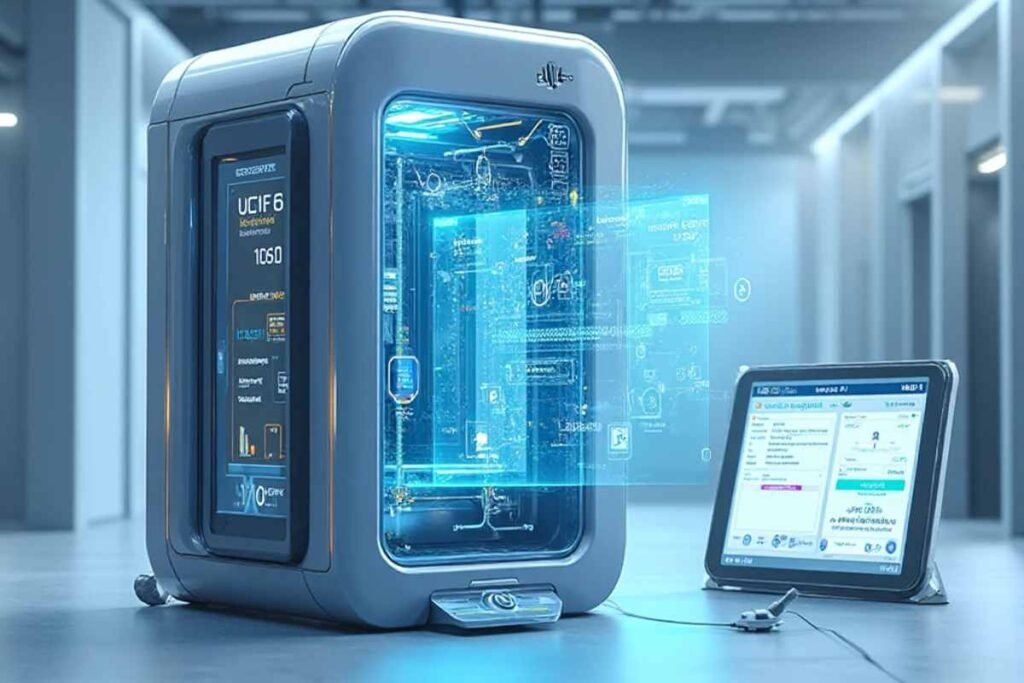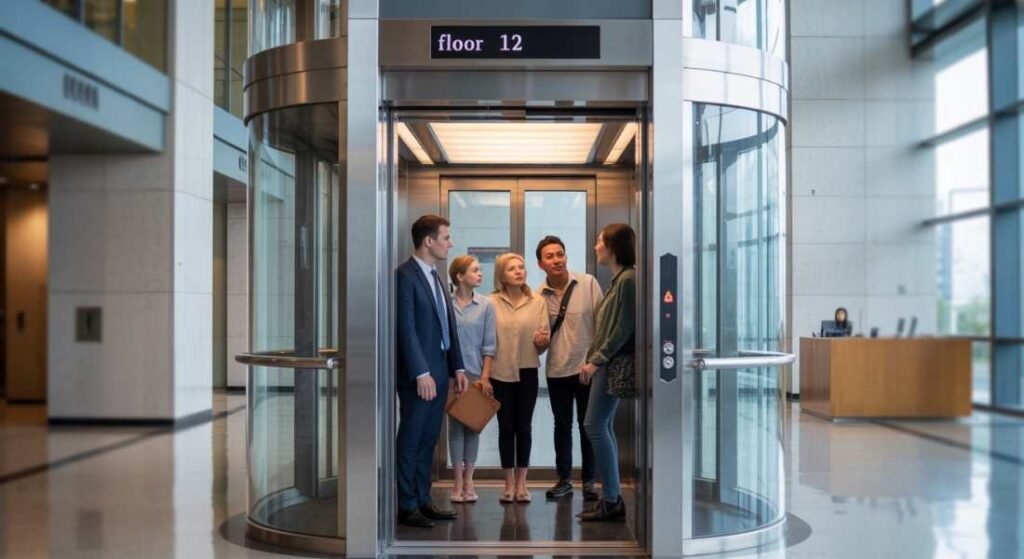An automatic rescue device is one of the most essential safety technologies used in elevators today. In the event of a sudden power failure or technical malfunction it ensures that passengers are not trapped inside. Instead the device automatically moves the elevator cabin to the nearest floor and opens the doors allowing a safe exit.
In modern high rise buildings where thousands of people rely on elevators every day installing an automatic rescue device has become a necessity rather than an option. It not only provides safety and peace of mind but also ensures compliance with international building safety standards.
What is the Automatic Rescue Device?

An automatic rescue device ARD is an advanced safety system primarily installed in elevators. Its function is to bring the elevator cabin to the nearest floor during a power outage or technical malfunction allowing passengers to exit safely. Unlike manual interventions this device works automatically without requiring human assistance. The device uses stored energy systems such as batteries or capacitors to provide the necessary power during an emergency.
Automatic rescue are not limited to elevators but can also be adapted in other safety applications. Their main purpose is to minimize risks reduce panic and ensure life safety. Understanding the basics is essential to realize why industries and building owners increasingly adopt these technologies.
Importance of Automatic Rescue Device in Modern Safety
The importance of the automatic rescue device cannot be overstated. It bridges the gap between unexpected emergencies and safe evacuation. When elevators suddenly stop due to power failures passengers can face fear suffocation or health emergencies. By automatically moving the cabin to the nearest floor, the ARD saves lives and reduces risks.
In modern smart cities regulatory authorities also stress the installation of automatic devices in high rise buildings. It is considered a mandatory requirement in many countries. Therefore its significance lies not only in ensuring safety but also in complying with safety regulations –emerging-technologies/.
How Does an Automatic Rescue Device Work?
The working mechanism of an automatic rescue device involves multiple steps designed to activate immediately during an emergency.
Detection of Power Failure
The device continuously monitors the power supply to the elevator system. The moment a failure occurs, it switches to backup power.
Activation of Backup Power
Automatic rescue rely on batteries or capacitors that store sufficient energy to power the elevator motor temporarily.
Controlled Movement
The elevator is safely directed to the nearest floor avoiding sudden jerks or rapid movements.
Door Operation
Once the cabin reaches the floor the doors open automatically allowing passengers to exit safely.
This seamless process ensures that passengers are not trapped inside for long periods.
Benefits of Installing Automatic Rescue Device?
The automatic rescue device provides several undeniable benefits.
Passenger Safety
The most important benefit is protecting lives by preventing people from being trapped during outages.
Reduced Panic
Knowing that elevators are equipped with ARDs reduces passenger anxiety in high-rise buildings.
Compliance with Laws
Many governments require ARDs in elevators as part of building safety codes.
Enhanced Building Reputation
High-rise developers and managers gain trust from tenants when ARDs are installed.
Overall, the benefits extend to physical safety mental reassurance and compliance advantages.
Role of Automatic Rescue Device in Passenger Experience
Automatic rescue device not only ensures safety but also improves overall passenger experience in high rise buildings. People using elevators feel more secure knowing that a system is in place to rescue them during power failures. This confidence encourages more trust in modern infrastructure and reduces fear of elevator usage.
Step by Step Guide to Installing an Automatic Rescue Device?
Installing an automatic rescue device involves several essential steps to ensure proper functionality.
Step 1: Site Assessment
Experts assess the elevator system and building power supply.
Step 2: Device Selection
Based on elevator type speed and weight capacity a suitable ARD is selected.
Step 3: Electrical Integration
The ARD is connected to the elevator’s control panel and battery backup system.
Step 4: Safety Testing
After installation technicians test the system by simulating power outages.
Step 5: Maintenance Training
Building staff are trained to monitor and maintain the ARD regularly.
Following these steps guarantees the ARD will function smoothly in emergencies.
Innovations in Automatic Rescue Device Design

Modern automatic rescue devices are evolving with smart technologies. Newer models are compact energy efficient and equipped with advanced monitoring systems. Some devices also allow remote diagnostics ensuring real time updates and preventive maintenance. These innovations reflect the continuous improvement in safety standards.
Types of Automatic Rescue Devices
There are different types of automatic rescue devices based on energy storage and technology.
Battery Based ARDs
These are the most common, using rechargeable batteries to operate during outages.
Capacitor Based ARDs
They store electrical energy in capacitors and provide longer lifespans than batteries.
Hybrid Systems
These combine batteries and capacitors for maximum efficiency and reliability.
Each type has its advantages and the choice depends on the building’s elevator system.
Automatic Rescue Device in Elevators a Safety Revolution
The elevator industry considers automatic rescue devices a revolution in passenger safety. Before their development passengers had to wait for manual rescue teams. With ARDs the risk of suffocation panic attacks or health complications is drastically reduced. Modern elevators are now incomplete without ARDs making them a global standard for high rise safety.
Maintenance of Automatic Rescue Device
Maintaining an rescue device ensures it works flawlessly when needed.
Regular Battery Checks
Batteries should be inspected and replaced as per manufacturer guidelines.
Functional Testing
Routine testing simulates power failures to confirm the ARD functions correctly.
Software Updates
Some advanced ARDs use microprocessors requiring periodic software updates.
Proper maintenance prevents malfunctions and keeps passengers safe at all times.
Automatic Rescue Device and Building Value
Installing an automatic rescue device directly impacts the value of a building. Buyers tenants, and investors consider safety as a key factor before making decisions. Buildings equipped with ARDs gain higher reputation stronger compliance with safety codes and long term sustainability. This makes them more attractive in the real estate market.
Industries That Use Automatic Rescue Devices
The use of automatic rescue devices extends beyond residential high-rises.
Commercial Buildings
Offices and shopping malls rely on ARDs for customer and staff safety.
Hospitals
Hospitals prioritize ARDs since patients may have critical health conditions.
Hotels
Tourism industries prefer ARDs to assure guest safety.
This demonstrates the widespread relevance of devices in various industries.
Challenges in Implementing Automatic Rescue Device
Despite the benefits some challenges remain in adopting ARDs.
Cost Concerns
Initial installation can be expensive, discouraging small building owners.
Maintenance Requirements
Regular upkeep is necessary which adds to operational costs.
Compatibility Issues
Not all old elevators are compatible with modern ARDs.
However advancements in technology are gradually overcoming these challenges.
Global Adoption of Automatic Rescue Devices

Countries across the world are rapidly adopting ARDs in high rise infrastructure. In regions prone to power cuts these devices are mandatory for elevator safety. Developed nations also use them to maintain international safety standards. This global adoption shows the universal recognition of ARDs in modern urban development comprehensive-tech-coverage/.
Conclusion
An automatic rescue device is no longer an optional safety feature it is a necessity. From ensuring passenger safety to complying with regulations ARDs play a vital role in modern building safety systems. By working automatically during emergencies they eliminate delays reduce panic and save lives. The future will only strengthen their role as technology continues to evolve.
Building owners industries and governments must prioritize ARD installation and maintenance for a safer tomorrow.
FAQs
What is an automatic rescue device?
An automatic rescue device is a system installed in elevators to safely move passengers to the nearest floor during power outages or malfunctions.
How does an automatic device work?
It detects power failure switches to backup power moves the cabin to the nearest floor and opens the doors automatically.
Is an automatic mandatory in all buildings?
In many regions safety regulations mandate ARDs for high rise and commercial buildings.
How much does installing an automatic device cost?
The cost varies depending on elevator type and device technology but it is considered a valuable safety investment.
Do automatic devices need maintenance?
Yes, regular battery checks software updates and functional testing are necessary to ensure smooth operation.
Can old elevators be fitted with automatic rescue devices?
In many cases yes though compatibility issues may arise. Retrofitting is possible with expert assessment.


